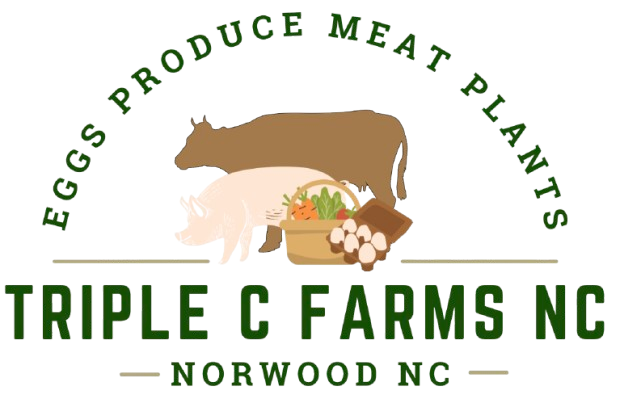
Tomato Plant
Locally Grown, Ready-to-Plant Tomato Plants
All of our plants are carefully grown from seed right here on our farm. They are nurtured with care and fully hardened off, so they're ready to thrive in your garden as soon as you plant them. Our tomato plants are in 6" rounds, giving them a strong root system for a successful start in your home garden. Bring the taste of farm-fresh tomatoes to your space with plants that are as robust as they are delicious!
Choose from Our Premium Tomato Varieties
We’re proud to offer a selection of flavorful tomato varieties, including the classic Beefsteak, the versatile Roma, the heirloom Cherokee Purple, and the sweet Cherry. Each one is carefully grown for exceptional taste and garden success.
Choose the Right Location
Tomatoes need full sun for at least 6-8 hours a day. Choose a sunny spot in your garden or on your patio where they'll get the most light.
Tomatoes prefer well-drained, loamy soil that is rich in organic matter. You can amend the soil with compost or well-rotted manure to improve fertility.
Preparing the Soil
Before planting, work organic matter like compost or aged manure into the soil to improve drainage and provide nutrients. You can also add a balanced fertilized to help with early growth.
Planting You Tomatoes
When planting tomato seedlings, bury them deep. Tomato plants have the unique ability to develop roots along their stems. Plant them deep enough so that 2/3 of the plant is below the soil surface, which will encourage a strong root system.
Space determinate (bush) varieties about 18-24 inches apart and indeterminate (vining) varieties 24-36 inches apart. This gives them enough room to grow without overcrowding, which can hinder airflow and lead to diseases.
Water thoroughly after planting to help settle the soil around the roots. Ensure the plant is well-watered but not waterlogged.
Watering
Tomatoes need consistent moisture, especially during the fruiting stage. Water deeply at the base of the plant, keeping the leaves dry to prevent fungal diseases. Aim to water when the top inch of soil is dry. Use mulch to retain moisture and reduce the need for frequent watering.
Fertilizing
Tomatoes are heavy feeders. Apply a balanced fertilizer at planting time and follow up with additional feedings every 3-4 weeks during the growing season. For better fruiting, you can use a fertilizer higher in phosphorus once the plants begin to flower.
Pruning
Prune the lower leaves and any suckers (small shoots between the main stem and branches) to encourage airflow and reduce the risk of diseases. Pruning can also help direct energy toward fruit production. For indeterminate varieties, pinching back some of the side shoots and leaves will help the plant grow more vertically and produce more fruit.
Staking or Caging
Most tomato plants, especially indeterminate types, will benefit from some form of support. Use stakes, cages, or trellises to keep the plants upright and prevent the fruit from touching the ground.
Harvesting
Tomatoes are ready to harvest when they've reached their full color (depending on the variety, this could be red, yellow, orange or even purple). Gently twist or cut the fruit from the vine, leaving the stem attached.
Storing Tomatoes
Store ripe tomatoes at room temperature for up to a week for the best flavor and texture.
If you have an abundance, consider canning, drying or freezing your tomatoes for later use.